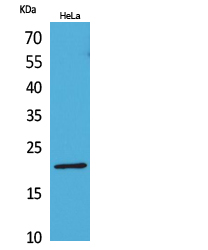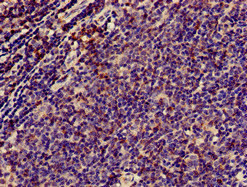![CD3e (T-Cell Marker)(OKT3), CF405S conjugate, 0.1mg/mL [26628-22-8] CD3e (T-Cell Marker)(OKT3), CF405S conjugate, 0.1mg/mL [26628-22-8]](https://biotium.com/wp-content/uploads/2021/02/view_image-130.jpeg)
CD3e (T-Cell Marker)(OKT3), CF405S conjugate, 0.1mg/mL [26628-22-8]
BNC040268
ApplicationsFunctional Assay, Flow Cytometry, ImmunoFluorescence, ImmunoPrecipitation, ImmunoHistoChemistry, ImmunoHistoChemistry Frozen
Product group Antibodies
TargetCD3E
Overview
- SupplierBiotium
- Product NameCD3e (T-Cell Marker)(OKT3), CF405S conjugate, 0.1mg/mL
- Delivery Days Customer9
- ApplicationsFunctional Assay, Flow Cytometry, ImmunoFluorescence, ImmunoPrecipitation, ImmunoHistoChemistry, ImmunoHistoChemistry Frozen
- CertificationResearch Use Only
- ClonalityMonoclonal
- Clone IDOKT3
- Concentration0.1 mg/ml
- ConjugateOther Conjugate
- Gene ID916
- Target nameCD3E
- Target descriptionCD3e molecule
- Target synonymsCD3e antigen, epsilon polypeptide (TiT3 complex); CD3e molecule, epsilon (CD3-TCR complex); CD3-epsilon; IMD18; T3E; T-cell antigen receptor complex, epsilon subunit of T3; T-cell surface antigen T3/Leu-4 epsilon chain; T-cell surface glycoprotein CD3 epsilon chain; TCRE
- HostMouse
- IsotypeIgG2a
- Protein IDP07766
- Protein NameT-cell surface glycoprotein CD3 epsilon chain
- Scientific DescriptionRecognizes the epsilon-chain of CD3, which consists of five different polypeptide chains (designated as gamma, delta, epsilon, zeta, and eta) with MW ranging from 16-28 kDa. CD3, also known as T3, is a member of the immunoglobulin superfamily that plays a role in antigen recognition, signal transduction, and T cell activation. It is found on all mature T-lymphocytes, NK, T-cells, and some thymocytes, and is expressed, typically at high levels, on peripheral T cells and majority of T cell neoplasms. Thymocytes express CD3 at different level on the cell surface in the course of differentiation and CD3 is predominantly intracytoplasmic in cortical thymus. Anti-CD3 clone OKT3 has been reported to have potent immunosuppressive properties in vivo and has been proven effective in the treatment of renal, heart and liver allograft rejection. In the crystal structure of the antibody-receptor complex, clone OKT3 was found to bind a conformational epitope on CD3e dominated by a linear stretch in the F-G loop of the subunit. Primary antibodies are available purified, or with a selection of fluorescent CF® Dyes and other labels. CF® Dyes offer exceptional brightness and photostability. Note: Conjugates of blue fluorescent dyes like CF®405S and CF®405M are not recommended for detecting low abundance targets, because blue dyes have lower fluorescence and can give higher non-specific background than other dye colors.
- SourceAnimal
- Storage Instruction2°C to 8°C
- UNSPSC12352203

![CD3e (T-Cell Marker)(OKT3), CF405S conjugate, 0.1mg/mL [26628-22-8] CD3e (T-Cell Marker)(OKT3), CF405S conjugate, 0.1mg/mL [26628-22-8]](https://biotium.com/wp-content/uploads/2020/10/CD3_OKT3-GAMCF640R-PBMC.jpg)





